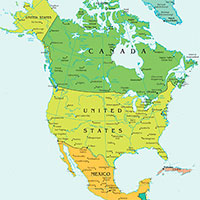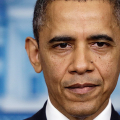Trump Card: Is America Leaving the UNFCCC?
Kya Lal | November 16, 2016.
Paris may not be dead but the international climate framework hasn’t been Trump-proofed, here’s why.
State of play
Donald Trump does not have the clearest position on climate change. For the better part of a decade he has flip-flopped on what he says, what he does, and what he says he will do on climate change. Most notably Trump has said that within his first 100 days in office, he would “cancel the Paris Agreement”. However, this will prove to be much harder than simply saying “you’re fired!” to this global climate deal.
The moment President Obama, signed the Paris Agreement, and it entered into force, the United States like all other parties to it became legally bound to follow it. Meaning they are obliged to follow the rules, regulations and expectations of the Paris Agreement. This also includes being bound by the Article 28 constraints.
Article 28 states that any country including America would have to wait out a minimum three-year period before they could notify the UNFCCC of their withdrawal from the Agreement. With a further year elapsing between notice being given and the withdrawal fully coming into effect. If Trump were to finally succeeded in withdrawing from the Paris Agreement, America would be ready to vote again.
The fastest, easiest and least convoluted way for Trump to make good on his promise would be to withdraw from the United Nations Framework Convention on Climate Change (UNFCCC), altogether.
Under the Paris Agreement, not only does it bind countries who intend to withdraw from it, it also stipulates the interplay between the Paris Agreement and the UNFCCC. Subsequently it states that under Article 28(3) that any country who withdraws from the UNFCCC is also effectively considered to have withdrawn from the Paris Agreement. Which according to sources on Trump’s transition team is what he is planning to do.
Like the Paris Agreement, the UNFCCC text is governed by a withdrawal procedure, Article 25(1). This provision reiterates the three-year minimum period before the withdrawal process can commence. Once again, a further one-year notification period before a full withdrawal can come into effect under Article 25(2).
The difference between the UNFCCC and the Paris Agreement is that the UNFCCC has been in effect for over two decades. As America has been a party to this since it’s entry into force, they have already met the mandatory three-year period needed before the withdrawal process could begin. Essentially leaving only the 12-month notification period before the withdrawal came into effect.
If the Trump administration were to begin this process, we could see the US having fully withdrawn from the UNFCCC and any and all subsequent agreements, accords, documents and conventions stemming from it (Article 25(3)), in a little over a year.
Where to next?
As Trump looks at his options to withdraw America from the international climate governance framework, the big question is how could they be implemented? For the Trump administration there are two options to facilitate the withdrawal whether this is from the UNFCCC or the Paris Agreement.
When President George H. Bush ratified the UNFCCC he did so through congress, and Obama passed the Paris Agreement through an executive order. Leaving us with two possible options for withdrawal, either through an executive order or through a congressional decision. The question now is which option will Trump take?
Trump may be within his powers to use an executive order; which are order’s given by the president, that are legally binding, but do not require congressional approval and carry the same weight as laws passed by congress. While Congress has the power to amend or clarify a law created through an executive order, they do not have the ability to veto one. However, they can also be challenged in court, especially on the grounds that an executive order has deviated from congressional intention or exceeds, the presidential vested power.
Trump could domestically use an executive order to withdraw from the Paris Agreement before providing notice to the UNFCCC of intent to withdraw from the convention as a whole.
While congress could not veto this executive order, they could challenge it at the supreme court citing that Trump had either deviated from their intent to be bound by these international documents or that Trump has exceeded his power in doing so.
If Trump were to find himself needing congress to reverse the decision that saw America become party to the UNFCCC, he may not face strong resistance as there is already support within the Republican congressional and senate caucus for the withdrawal. If Trump chooses to use some of his early political capital on this it is within the realm of technical possibility that he could get the votes to withdraw from the international climate governance framework.
What withdrawing actually means?
If America walks away not only from the Paris Agreement but from the UNFCCC as a whole, where does that leave the rest of us? As both documents have already met the threshold necessary to enter into force and become legally binding, it would have no legal affect but major implications politically.
The ramifications that America’s withdrawal would bring are largely related to its obligations and what it would say about America’s overall approach to foreign policy and multilateralism. For example, they would have no obligation to contribute to the Green Climate Fund, which would be a loss of at least US$3 billion based on current numbers.
It would also mean America would lose its place at the negotiation table, having no official voice or presence at the main permanent decision making body on around climate change.













comment